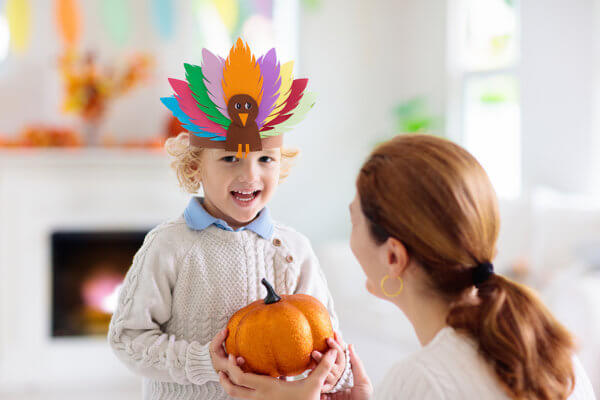Good vision is key to the development, academic success and well-being of all infants, toddlers and preschoolers. There are many conditions that can affect your child’s vision, most of which your pediatrician will check for at well-child visits. The good news is that when detected early, pediatric eye issues can be corrected or reversed. Here’s what you need to know about the most common eye conditions in the 0- to 5-year-old set.
PINKEYE
What’s this? Would you believe that three million school days are lost thanks to conjunctivitis, aka “pinkeye”? That’s because this swelling of the conjunctiva (the filmy membrane covering the inside of eyelids and the whites of the eye) is super-contagious. Symptoms of reddish or pink discoloration, discharge, burning, irritation and/or crusty lashes can be caused by a virus (the same one as the common cold), a bacterial infection or an allergic reaction.
What’s the best treatment? For viral conjunctivitis, symptoms can last one to two weeks and will disappear without treatment. Longer than two weeks, it’s likely a bacterial infection that may require a prescription for antibiotic eyedrops from your pediatrician. For allergies, a cool compress on the eyes will provide some comfort.
The best medicine for pinkeye is really prevention. Children in daycare and preschool are particularly susceptible because they’re in such close contact with other kids. Healthy habits such as frequent hand washing, avoiding reuse of towels and washcloths, changing pillowcases and discouraging your child from touching his eyes are the best defenses against pinkeye. “Hand hygiene is the most important thing,” says Avery Weiss, MD, chief of ophthalmology at Seattle Children’s Hospital and professor of ophthalmology at the University of Washington School of Medicine. “If your child does get pinkeye, keep him out of daycare!”
STY
What’s this? That angry-looking, painful, sometimes pus-filled red lump near the edge of your child’s eyelid could be a sty caused by an infected eyelash follicle. On the other hand, the lump might be a chalazion, which is usually larger than a sty but usually not painful, and is caused by a clogged oil gland in the eyelid. “Some kids call these ‘eye zits,’” laughs Hawke Yoon, MD, a pediatric ophthalmologist at Children’s Memorial Hospital in Chicago, “which is a pretty good description.”
What’s the best treatment? Never squeeze or “pop” a chalazion or sty! If you do, the infection could spread to surrounding tissue. Instead, soak a clean washcloth in hot water and apply to your child’s eyelid for 10 minutes, three to five times daily until the lump is gone. This will allow the clogged gland or infected follicle to open and drain. If there’s no improvement after several days, your pediatrician may prescribe antibiotic ointment. Chalazia and sties generally respond very well to treatment with compresses or ointment. In rare cases, a pediatric ophthalmologist may need to drain the lump if healing is too slow or your child’s vision is impeded.
BLOCKED TEAR DUCT
What’s this? Your eyes constantly produce tears to protect their surface areas. These tears then drain into the very small opening in the corner of your eye (near the nose). Sometimes this duct isn’t completely developed at birth, which causes thick tears to pool in the corner of your baby’s eye(s) and then stream down his cheeks. “About 20 percent of all newborns have a tear duct obstruction,” says Weiss. You won’t notice a blocked duct until your baby starts producing tears at about 2 to 3 weeks old.
What’s the best treatment? Watching and waiting. “The duct usually opens on its own by the time your child is 6 to 12 months old,” says Weiss. In the meantime, ask your pediatrician to teach you how to gently “milk” or massage the duct two to three times a day. If an eye infection develops, drops or ointment will be prescribed. On the off chance the duct stays blocked after your baby’s first birthday, a pediatric ophthalmologist may need to perform a low-risk procedure to open the duct.
INJURY
What’s this? Contrary to most parents’ thinking, running with scissors is not the leading cause of eye injury in kids younger than 5. “Corneal abrasion from fingers, toys, pencils and balls are the most common injury in this age group,” says Stacy L. Pineles, MD, assistant professor of ophthalmology at Jules Stein Eye Institute, UCLA. Scratches or cuts to the cornea—the clear protective area at the front of your eye—can be very painful. Symptoms include tears, blurred vision, redness and a gritty/sandy feeling in the eye. In kids 5 years and older, it’s sports—particularly baseball and basketball—that cause the most eye injuries, resulting in 100,000 doctor visits every year.
What’s the best treatment? Don’t try to remove anything embedded in the eye. And don’t touch, rub or administer ointment—you’ll just increase the irritation. Instead, call your pediatrician, who will let you know whether to rinse the eye with saline solution (if the injury is minor) or seek prompt medical attention. A minor corneal abrasion should heal within five days.
The American Academy of Pediatrics strongly urges young athletes to wear sport-specific protective glasses or goggles that have been fitted by a children’s eye doctor or other qualified professional. Protective eyewear can withstand the impact of a ball (or anything else) traveling at 90 miles per hour and prevent 90 percent of sports-related eye injuries. Tell your little shortstop that she’ll still be able to field and hit homers because protective eyewear will not hinder her performance in any way.
LAZY EYE
What’s this? “Lazy eye,” as parents call it, refers to either amblyopia or strabismus, terms that the eye docs prefer. Amblyopia, a condition in which one eye may see better than the other, affects 3 to 4 percent of children in the United States. The eye with poor vision sends the brain a blurred image. The brain becomes accustomed to these fuzzy images and can’t interpret a clear image even when glasses are used. Strabismus is a misalignment of one or both eyes—such as a crossed eye, an outward-turning eye or a high- or low-sitting eye—and can cause amblyopia. When a child’s eyes are oriented in two directions, the brain receives two different visual cues. To avoid double vision, the brain ignores the image sent from the misaligned eye, resulting in poor visual development.
What’s the best treatment? “When one eye is not seeing as well as the other, the connection between the eye and the brain may not be forming correctly,” explains Pineles. Doctors strengthen the eye-brain connection by forcing the child to use his weak eye. A patch (an adhesive applied directly to the skin around the eye, not a pirate patch!) placed on the dominant eye during waking hours allows the weak eye to get stronger. Vision improvement usually occurs within weeks or months of starting the patch treatment, but optimal results can take years. If a young child won’t wear a patch as prescribed, doctors sometimes blur the good eye with drops, which also forces the child to use his weak eye. When eyes are misaligned, glasses and/or eye muscle surgery are usually necessary to get both eyes working together again.
Off the Eye Chart
Less common eye problems in babies, toddlers and preschoolers:
- Pediatric cataract. If the pupil of your child’s eye seems cloudy or white, she may have a cataract. Another sign: When “red eye” appears in just one eye in photos.
- Ptosis. Also called “droopy eyelid,” this condition can restrict or block your child’s vision and sometimes requires surgery.
- Pediatric glaucoma. Excessive tearing, light sensitivity, heavy blinking, a cloudy cornea and poor vision are symptoms of this rare but serious eye disorder.
Vision Rx?
How do you know if your child needs glasses? Often, it’s intuition. “Some parents just believe their child doesn’t see well,” says Yoon. “More than half of the time, they’re right.” In addition to maternal instinct, here are other signs to consider:
- Squinting may mean your child is trying to focus on a blurred image to see it more clearly.
- Holding objects away from his face could be a sign of hyperopia (farsightedness). But rest easy—for most farsightedness in young kids, glasses are rarely needed.
- Sitting too close to the TV could be a sign of myopia (nearsightedness). Then again, your child just may love being close to the action. Don’t fret: Proximity to the TV does not damage vision, despite your mom’s constant warnings.
- Covering one eye when reading, watching TV or trying to focus could be a sign that one eye isn’t seeing as well as the other.
Make an appointment with a pediatric ophthalmologist if you suspect your child needs glasses. (To find one in your area, visit aapos.org, the site for the American Association for Pediatric Ophthalmology and Strabismus.) Young kids take to glasses more easily than you’d think. “When they realize how much better they can see, they wear them,” says Pineles. An optician who specializes in pediatric eyewear will make sure the frame is comfortable and fits well. (Check out miraflex.info for an extensive range of sturdy—and fun!—children’s eyewear.)
Writer Nancy Gottesman and her son Robby, 17, both wear glasses, but they have a lot of insight.



